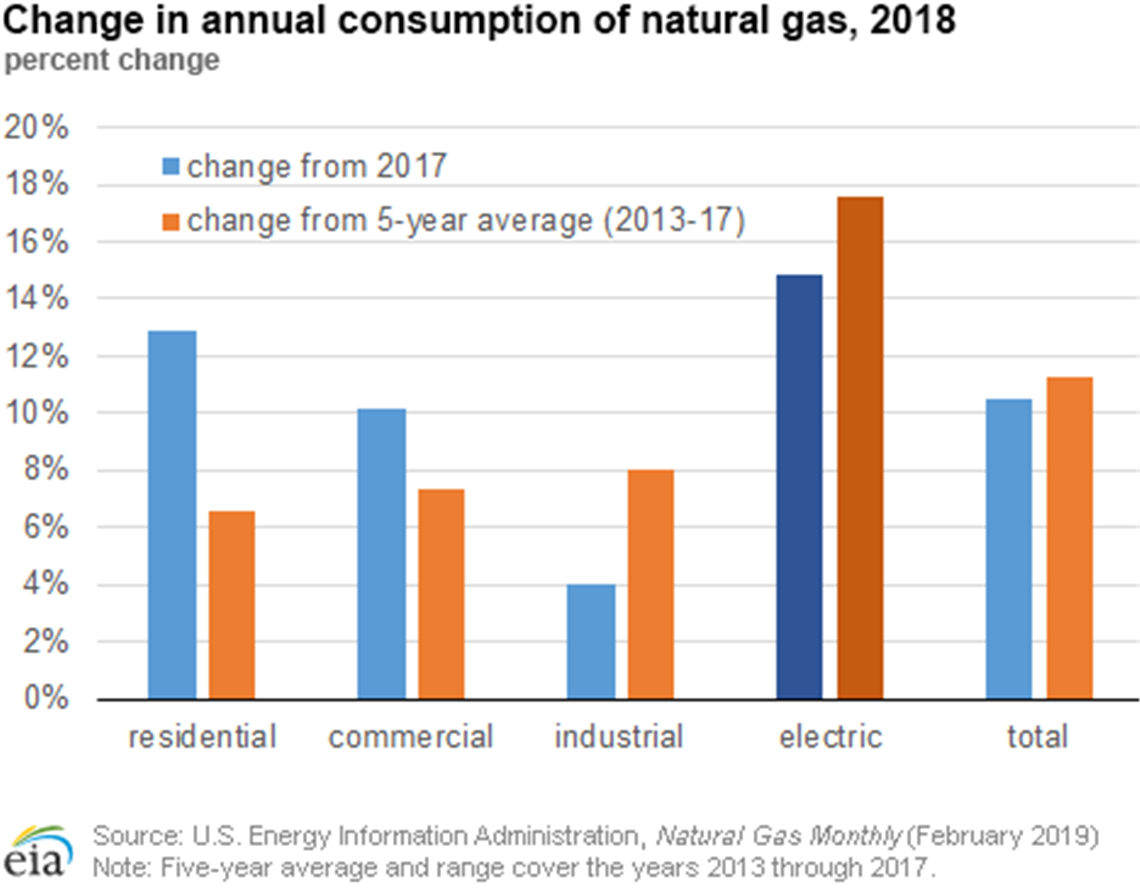Record Gas Power Burn In ’18
March 21, 2019

Natural gas consumption in the electric power sector — or power burn — reached record levels in 2018, growing more than any other end-use sector. Power burn increased by 15% in 2018 relative to 2017 and was nearly 18% higher than the previous five-year (2013 to 2017) average, according to a new report by the U.S. Energy Information Administration (EIA).
Power burn is partly driven by summer electricity demand for air conditioning, which can be represented by cooling degree days (CDDs). In 2018, the number of CDDs in the Lower 48 states was higher than average, particularly during the summer, which contributed to the year-on-year increase in power burn.
Overall demand in the electric power sector only increased by 4% in 2018, implying that some of the year-on-year increase in power burn can be attributed to higher baseline usage of natural gas.
Most new generation capacity installed in 2018 was natural gas-fired, with Pennsylvania reporting the highest levels of natural gas-fired generation capacity buildout, followed by Virginia and Maryland. These states are part of the Pennsylvania-New Jersey-Maryland (PJM) Interconnection, the largest electric regional transmission organization (RTO) in the United States.
In 2018, for the first time in PJM’s history, natural gas-fired generation exceeded coal-fired generation, comprising 30.6% and 28.6% of total regional generation, respectively, according to PJM’s recently released State of the Market report.
In addition, increases in natural gas power burn are also the result of favorable natural gas prices, substantial natural gas pipeline buildout and record-high natural gas production in recent years, which together have made natural gas-fired generators more economically competitive in more regions of the country.
Most newly built natural gas-fired generation capacity uses combined-cycle technology, which is the most efficient type of natural gas-fired generation. Most of the new generation capacity in the coming years is expected to be natural gas combined-cycle plants and solar photovoltaic. EIA’s Short-Term Energy Outlook forecasts that natural gas consumption in the electric power sector will set a new annual record in 2019 and again in 2020.
MAGAZINE
NEWSLETTER
CONNECT WITH THE TEAM





